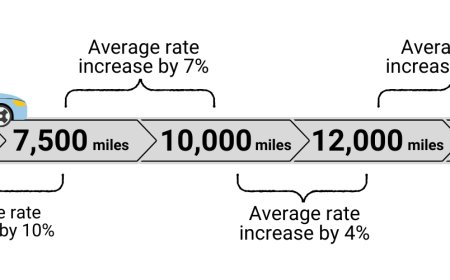7 Common Mistakes to Avoid When Enrolling in Stock Market Trading Courses
In this blog, we’ll go through seven common mistakes people make when choosing stock market trading courses, and how you can avoid them to ensure your learning journey starts on the right foot.

Enrolling in a stock market trading course is a smart move—especially if you're serious about mastering the art of trading and building a stable side income or full-time career. But like any important decision, rushing into the wrong course can cost you both time and money.
Many beginners fall for flashy ads, viral Instagram reels, or influencer promotions, only to find themselves disappointed and confused a few weeks later.
In this blog, we’ll go through seven common mistakes people make when choosing stock market trading courses, and how you can avoid them to ensure your learning journey starts on the right foot.
1. Falling for Unrealistic Promises
“If you take this course, you’ll make ₹10,000 per day from day one.”
“Guaranteed profits in one week!”
“Learn the secret strategy that banks use.”
These kinds of promises are red flags. No legitimate educator will ever guarantee profits or quick success in the stock market. Trading is a skill that takes time, discipline, and patience to develop.
What to do instead:
Look for courses that focus on fundamentals, risk management, psychology, and technical skills—not just outcomes. A course that promises learning and growth is more trustworthy than one that promises instant wealth.
2. Choosing a Course Based on Popularity Alone
Just because a course is trending or has gone viral on YouTube or Instagram doesn’t mean it’s the right one for you. Some influencers package basic content in flashy formats but offer very little depth or structure.
What to do instead:
Check the curriculum. Look at reviews from real learners. Investigate the background of the trainer. Make sure the course content actually matches your learning goals.
3. Ignoring Your Own Learning Style
Some learners are comfortable with self-paced online videos. Others need scheduled, instructor-led classes. A mismatch between your learning style and the course format often leads to low retention, boredom, or lack of progress.
What to do instead:
Ask yourself:
-
Am I a self-learner or do I need accountability?
-
Do I enjoy interactive learning or prefer studying in silence?
-
Do I want recorded lessons or live sessions?
Choose a course structure that fits you—not the other way around.
4. Not Checking for Practical Application
Many courses focus heavily on theory—definitions, concepts, and market terms—but offer no real-world practice. You learn what a moving average is, but you never learn how to actually use it on a live chart.
What to do instead:
Ensure the course includes:
-
Charting tools like TradingView
-
Live trade examples or simulations
-
Case studies
-
Assignments or backtesting tasks
Practical exposure is what turns knowledge into skill.
5. Overlooking the Importance of Risk Management
Some courses focus too much on strategies and ignore the most crucial aspect of trading—risk management. Without understanding how to limit your losses and protect your capital, even the best strategy can lead to failure.
What to do instead:
Look for topics like:
-
Position sizing
-
Risk-reward ratios
-
Stop-loss and trailing stop techniques
-
Daily and monthly loss limits
These are essential if you want to last long in the trading game.
6. Not Verifying the Instructor’s Experience
Would you take fitness advice from someone who's never been to a gym? Then why take trading lessons from someone who's never traded?
Sadly, the stock market education space is filled with marketers pretending to be traders. Just because someone is good at making videos doesn’t mean they’re good at managing money.
What to do instead:
Do a background check:
-
Is the trainer active in real markets?
-
Do they share live trades or trading journals?
-
Do they explain both wins and losses?
-
Do they have experience beyond just content creation?
Credibility matters more than presentation.
7. Not Considering Long-Term Support
Some courses end the moment the last video plays. You’re left with no way to ask questions, clarify doubts, or update your knowledge as markets evolve.
What to do instead:
Choose a course that offers:
-
Access to a student community (Telegram, WhatsApp, Discord)
-
Regular live webinars or market reviews
-
Mentorship or one-on-one sessions (even if paid separately)
-
Free updates as the market changes
Ongoing support makes a massive difference when you start applying what you’ve learned.
Bonus Tip: Avoid Jumping Between Multiple Courses Too Quickly
Many beginners hop from one course to another hoping to find the “perfect strategy.” In reality, the best traders succeed not because they know everything, but because they master one system and stick to it.
What to do instead:
Pick one well-structured course, go deep into the content, and focus on practicing and refining your approach. Don’t keep switching unless the course is clearly flawed or incomplete.
Final Thoughts
The right stock market trading course can accelerate your growth, reduce your learning curve, and save you from expensive mistakes. But choosing the wrong course—or approaching it with the wrong expectations—can do just the opposite.
To sum it up:
-
Avoid hype and unrealistic claims
-
Match the format to your learning style
-
Choose trainers with real experience
-
Prioritize practical learning and risk management
-
Ensure there’s post-course support and community access
Trading isn’t just about strategy—it’s about discipline, consistency, and learning from the right people.
So take your time, do your research, and make a smart decision. After all, the first trade you make in your trading journey is the one you make when you choose your course.







































